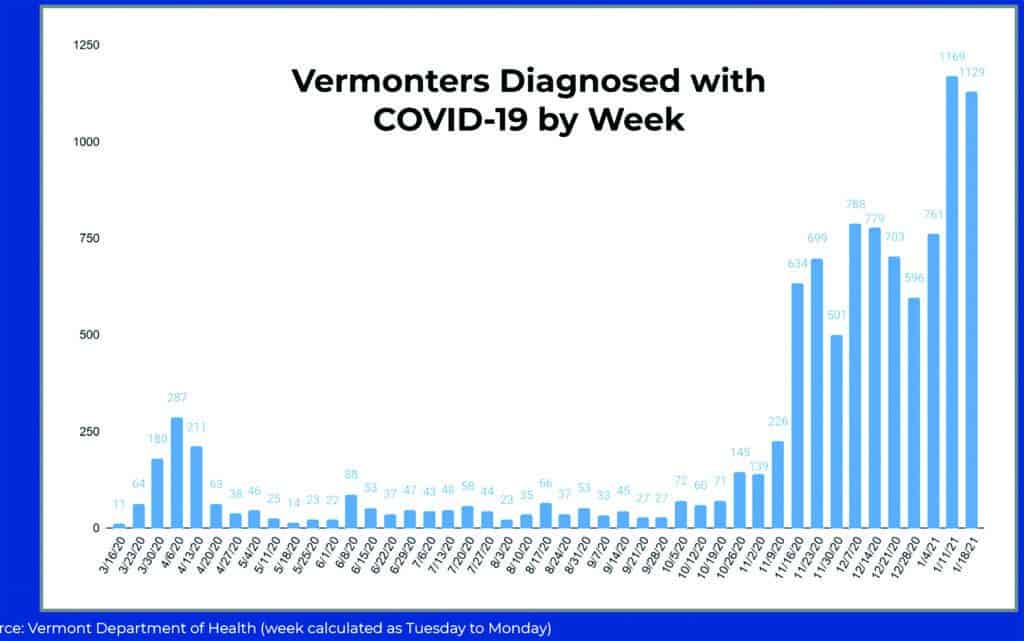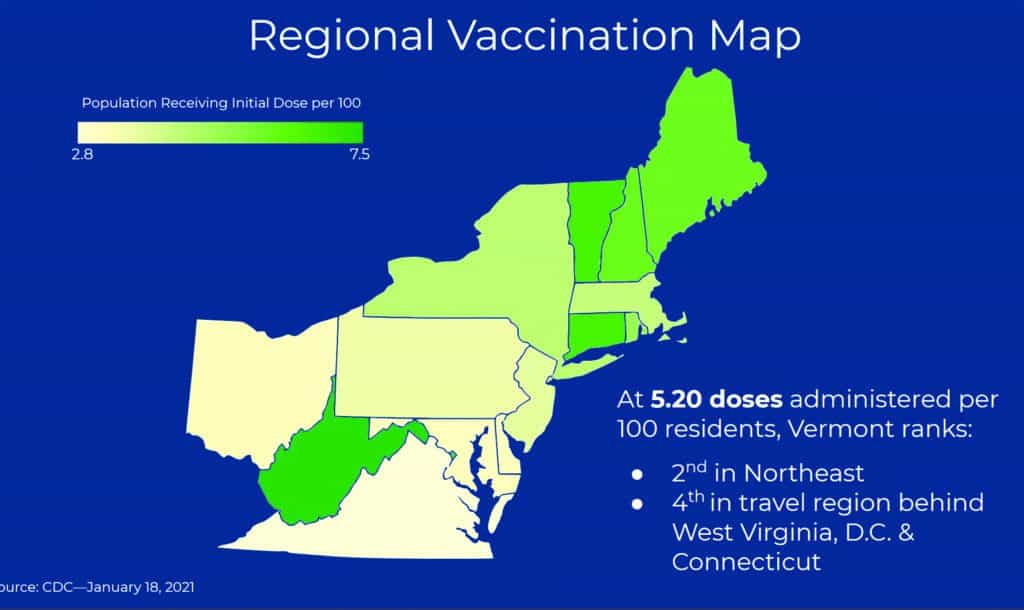
By Erin Petenko/VTDigger
The nation has experienced its first sustained decline in Covid since July, an early sign that the virus has hit its peak in the U.S., Vermont officials said at a press conference Tuesday, Jan. 19.
The trend is not regional, either. In fact, 41 states experienced case declines over the past week, said Mike Pieciak, commissioner of the Department of Financial Regulation.
Vermont’s case numbers, too, have begun to decline, a potential sign that the latest wave of the virus sparked by the Christmas and New Year’s holidays is passing.

“Over the past four days, case counts have trended downward: from 180 to 140 to 123 to 102,” said Dr. Mark Levine, state health commissioner. “And testing did not seem to suffer over the holiday weekend… I am cautiously optimistic,” Levine said.
The state had 1,129 cases in the past week, compared to 1,169 the week before, according to Pieciak.
Levine added there have been no new deaths from the virus since last week, leaving the current total at 163. The number of hospitalizations in the state has “plateaued,” with no significant change in numbers. Long-term care cases also appear to be slowing down.
The state had vaccinated 35,000 people as of Tuesday, including 5,000 people who have received the second dose of the vaccine, health department data showed. But Levine said it was too early to say that vaccinations are having an impact.
Pieciak said cases across the Northeast declined 12% this week compared with the week before, but noted that the total numbers are still far higher than they were a few months ago. The test positivity rate in the Northeast is also trending downward, standing at 6.27%, down from 10.73% at the beginning of January.
By comparison, Vermont’s positivity rate is 2.6%, the best in the nation.

At the news conference Tuesday, Gov. Scott again reminded Vermonters to be ready for the next phase of vaccinations, where people 75 and over can sign up for the vaccine.
He said he knows Vermont’s decision to prioritize the oldest segment of the population is different from many states that chose to allow a broader range of people to sign up.
“Overpromising is not the answer,” Scott said. “The logical approach is to manage the supply of the vaccine we’re receiving.”
Scott said the state is “at the mercy of the federal government” to receive enough vaccine doses to continue with the next phases. The state now receives about 9,000 doses each week, although Levine said the state can’t forecast how many doses it can expect moving forward from the federal distribution.
“It’s been all over the place over the last few weeks, so it’s difficult for us to say what we can expect,” he said. “We have to just continue to deal with reality.”




